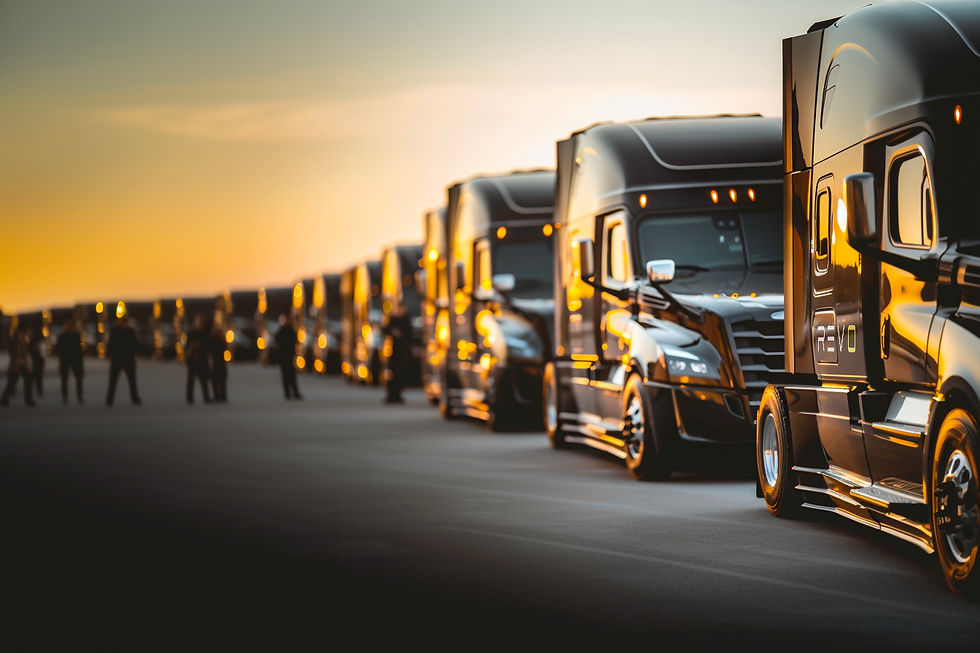Top Five Transportation Trends
- spholdingswebsites
- Sep 15, 2022
- 4 min read
Supply chain disruptions have brought about innovation. From a transportation standpoint, this has included major technological advancements. Last week, Chris Cunnane highlighted five key transportation trends that are changing supply chains from a technology standpoint. These trends and technologies include the network effect, innovation in transportation management systems, time slot management applications, autonomous trucks, and the future of last-mile deliveries, specifically looking at autonomous mobile robots and drones for home delivery.
1. The Network Effect
The first of the transportation trends is the network effect is at the heart of supply chain transformation. Essentially, the network effect exists when all components of the supply chain technology ecosystem work together to improve the performance of the end-to-end supply chain.
From a transportation standpoint, the network effect relies on communication between applications to make freight moves more efficient. This can mean more efficiently matching loads with capacity, using visibility tools to predict more accurate ETAs, optimizing routes, and ensuring that trucks can be loaded and unloaded as efficiently as possible. Sustainability is a byproduct of the network effect, as load consolidation and route optimization mean fewer trucks on the road to deliver the same freight, which is important for reducing carbon emissions.
The network effect plays a role in the remaining trends below, especially transportation management and time slot management.
2. TMS Innovation
The second transportation trend is innovation in transportation management systems or TMS. Historically, TMS adoption has offered a strong ROI. The primary reason companies buy a TMS is for freight savings. These freight savings can be attributed to simulation and network design, load consolidation and lower cost mode selections, and multi-stop route optimization. As freight costs have continued to rise, companies have looked more and more to their TMS to mitigate these rising costs. A big reason for TMS growth is the fact that technology has been steadily improving over the last few years. There are three innovations in particular that are playing a big role.
Artificial intelligence - factoring capacity, regulations, hours of service, and properly plan shipments.
Real-time visibility solutions - Crucial to ensuring a positive customer experience. especially for OTR Loads
IoT - Enabled fleet management solutions can improve visibility and versatility for companies and provide proactive maintenance-related cost savings.
Time Slot Management
Time slot management helps to organize warehouse resources to prepare for an incoming truck. The warehouse needs to know who is coming and when. Beyond that, warehouse workers need updates on what dock the truck is arriving at, when the truck is loaded, what papers they will pick up, what needs to be signed, and when they are leaving the warehouse or yard. Time slot management applications can help to reduce the impact of changes. Whether it is due to traffic jams, missed appointments, or a variety of other reasons, loadings and unloading will need to be rescheduled on any given day.
Autonomous Trucks
The fourth transportation trend is autonomous trucks. The jury is clearly still out on autonomous trucks – there have been plenty of pilots and publicity, but are self-driving trucks ready to take to the roads in a critical mass? One of the biggest drivers for self-driving trucks is the driver shortage which continues to grow every year. However, autonomous trucks are not the quick solution to the driver shortage. In fact, similar to autonomous robots within the warehouse, autonomous trucks are not here to replace human drivers. Instead, they are here to collaborate with drivers to make the task easier.
The practice of platooning seems to be a space where the reality of autonomous trucks, could first make an impact. In these solutions, the lead truck is equipped with technology augmentation while a follower truck operates in tandem through a fully autonomous system. The vehicles move in a group or platoon with the trucks driven by smart technology and communicating with one another. Each of the trucks still has a driver onboard for safety and for taking over when exiting the freeway. This allows the follower driver to log off and rest while the truck is in motion. This means that the two trucks, operating in tandem, allow drivers to drive twice as far while ensuring they don’t exceed hours of service regulations.
Autonomous Last Mile Deliveries
The final transportation trend in the future of last-mile delivery. One of the most difficult and expensive aspects of the supply chain is the last mile and home delivery. However, from a customer experience standpoint, it is also the most memorable and possibly important. As e-commerce continues to grow, we are looking at autonomous last-mile deliveries as part of the solution.
The other side of autonomous home delivery is autonomous mobile robots. Many companies have begun testing autonomous delivery bots in cities and on college campuses. For many of these companies, however, the term “autonomous” may be a little bit misleading. In fact, throughout the delivery process, there is a team of human minders that are tracking the vehicle every step of the way. While the behind-the-scene workers mostly monitor the robot, if the bot runs into trouble, the human worker can use a remote control to drive or troubleshoot the vehicle. And if the robot becomes stuck or unable to make the delivery, these workers will come to the rescue to make the delivery themselves. Companies like Starship Technologies, Nuro, and FedEx have completed a number of pilot programs and are deploying delivery bots right now.
Over the last two years, investors have pumped more than $8 billion into autonomous delivery companies. The big question is what is the public perception of these delivery vehicles? The jury is still out on that, but as they become more commonplace, and the use cases continue to pile up, the use of this technology gets closer to being the normal. Either way, it is a glimpse into what the future holds for home delivery.



Comments